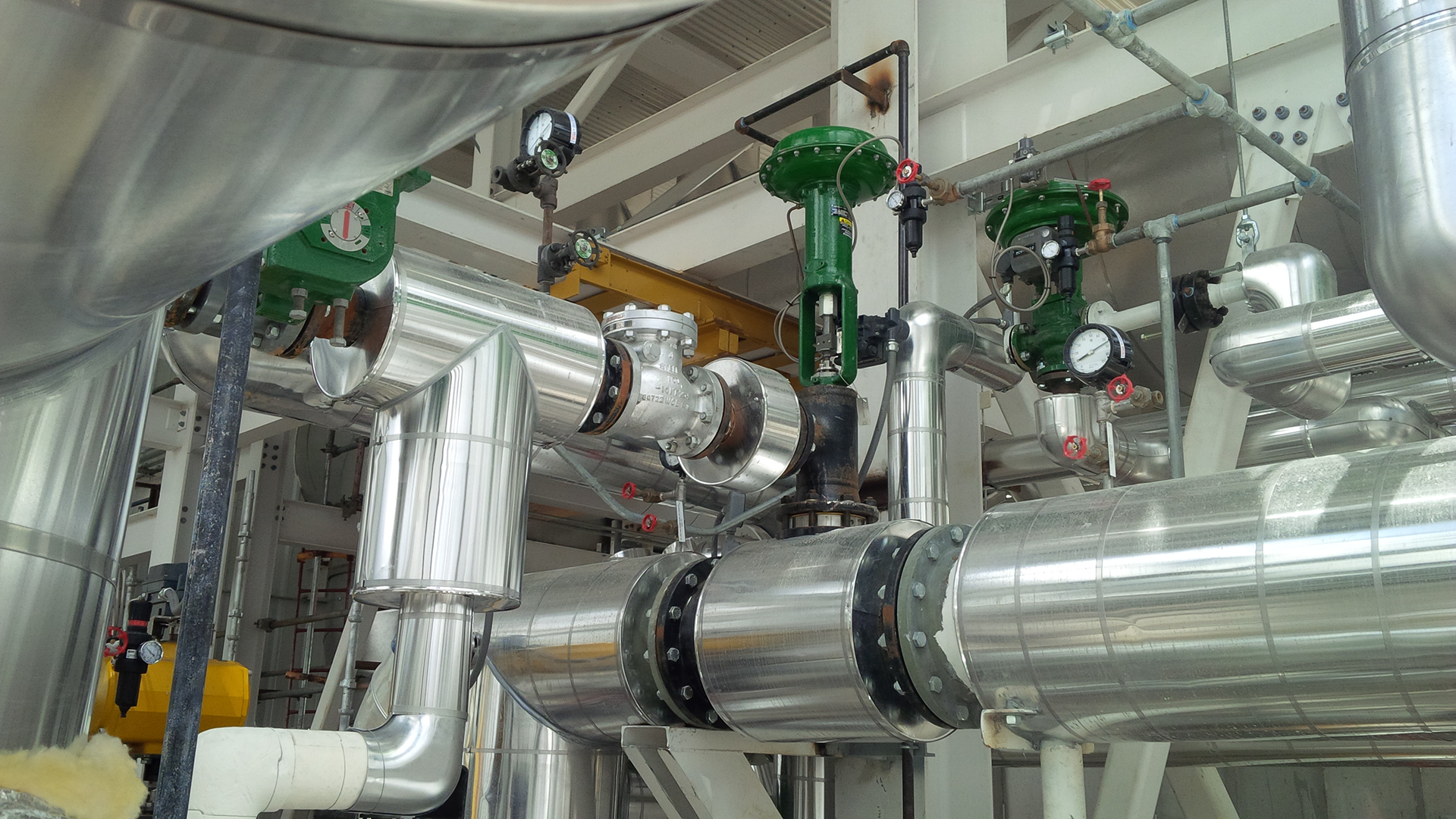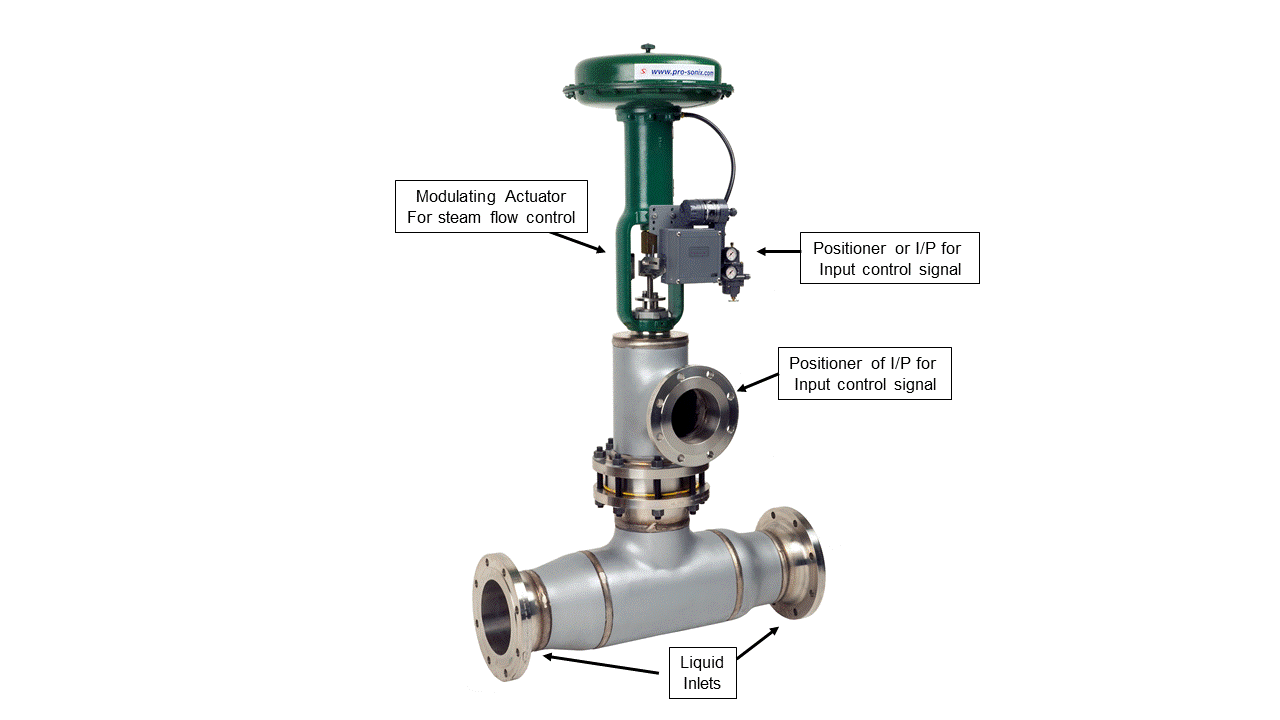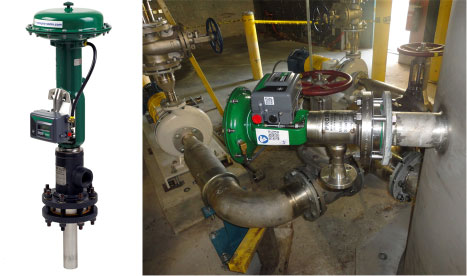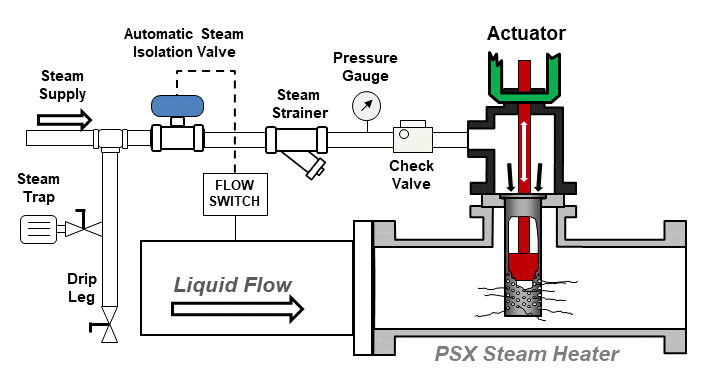
Top Tips to Optimize Direct Steam Heating Applications
These recommendations will help you design a safe and reliable heating system.
Many companies have a need for heating of fluids in their facilities. These can include hot water for plant sanitation, boiler feedwater heating, heating of fluids to improve chemical reaction, along with hi-solids slurries and wastewater heating. Achieving fluid target temperature can reduce chemical usage, improve processing speed, and assure that regulatory requirements are met in wash down or CIP cleaning applications.
Steam injection heating, also known as DSI heating (direct steam injection heating), directly injects steam into the fluid. Heating can be done inline, where the DSI heater is used to heat a continuous fluid stream, or to heat process hot water storage tank with tank jet spargers. These heaters can be tank mounted or mounted in nearby piping. While this guide focuses on steam injection heating, they can also be applied to indirect contact heating devices such as heat exchangers. Below are some tips to consider when evaluating a steam injection heater to optimize your process heating application.
Steam injection heating, also known as DSI heating (direct steam injection heating), directly injects steam into the fluid. Heating can be done inline, where the DSI heater is used to heat a continuous fluid stream, or to heat process hot water storage tank with tank jet spargers. These heaters can be tank mounted or mounted in nearby piping. While this guide focuses on steam injection heating, they can also be applied to indirect contact heating devices such as heat exchangers. Below are some tips to consider when evaluating a steam injection heater to optimize your process heating application.
1. Be Sure to Communicate All Relevant Process Heating Application Information When Requesting a Quote.
An “application survey” is designed to help guide you through the evaluation of your steam injection heating application. Basic information needed includes flowrates (high, low, nominal), inlet and discharge temperatures and steam pressure. Other data such as fluid names, physical properties (solids, present, specific gravity, specific heat and viscosities), liquid pressure and proper flow velocities are all important as they help in the equipment selection process.It is also important to communicate any heating issues or improvements you are trying to address. Also, be sure to provide details on your heating process. For example, a one-pass inline heater is a very different application than a tank heating system where turndown is critical to support low daytime process needs and high heat load requirements such as end of shift cleaning.
2. Steam Flow Control Devices
There are two types of steam flow control designs. The first is the use of an external pressure-reducing valve, which adjusts incoming steam pressure to the heater to make changes in temperature output. The other design is internally modulated where the steam control device is direct coupled to the heater. In this design, steam pressure is not reduced, but rather the mass flow of steam is controlled, maintaining full steam pressure across range of operation. This design can provide higher turn down. Both can be considered, and your application requirements will help lead to the best choice.3. Identify Steam Pressure at the Point of Heating
All boilers and steam headers will have a steam pressure rating; however, you want to identify your steam pressure requirements at your heating location. This means that from your steam header, you should calculate your line losses due to friction, fittings (elbows, tees, etc.) and components such as valves and strainers) to establish what your design steam pressure is at the heater location.4. Size for Actual Needs to Optimize Control Operating Range
One of the more common problems is overestimating application conditions. Oversizing the heater’s capacity, relative to the actual design operating conditions, can lead to control issues. If the actual conditions you will be operating at are at the low end of injector capacity, you will end up operating within a very small control band. This can lead to temperature control issues and premature wear of steam injector components. Like most valves, sizing to use 40 to 80 percent of the operating range is optimal. Confirm with your steam injection heater supplier that they offer variable sets of steam trim sizes to upgrade the heater should future heating needs change.5. Maintain Proper Steam and Liquid Pressure Differential
Steam injection heating requires a pressure differential between the steam and liquid, whereby the steam pressure must be higher than the liquid pressure. Proper pressure differential is critical for rapid steam jet condensation. If the proper differential is not maintained, it can lead to steam flashing (steam hammer or water hammer) and premature wear of steam injector components. Different types of heaters (jet diffusers, as seen in figure 2, eductors, etc.) all have different pressure differential requirements. Steam injection heater manufacturers can provide the maximum allowable back pressure for their specific heater design.6. Pump Flow Changes – Ramped Changes Ensure Stable Operation
It is important to avoid flow fluctuations that occur faster than the temperature control loop can respond. Steam injection heating is very responsive to control changes and, unlike indirect contact heaters such as heat exchangers, there is generally no lag between the process control calling for the addition of steam and the heater responding. Pump flow changes should be ramped allowing the temperature control loop to respond.Keep in mind that rapid changes in flow rate will lead to continuous control loop adjustments, which can impact temperature control and rapid drops in liquid flow can lead to steam flashing until the temperature control can respond.
7. Steam Line components can Improve Heater Performance
The steam supply condition and steam line components play an instrumental role in the performance and reliability of your steam injection heating process. (See figure 3). Dry saturated steam is recommended. Some superheat can be present; however, this must be identified in application review. Check valves prevent liquid back flow into steam line and steam trap and drip legs remove condensate. Steam strainers will remove solid particulate that can plug & damager steam injector internals.8. Confirm Your Boiler Can Supply the Steam Required for Your Heating Application
Steam injection heating can come up online very quickly, which makes it very suitable for intermittent heating requirements. Keep in mind though that when heating is called for, the heater will move to the fully open position. If the heater’s steam demand is close to the boilers available output, this can draw down your boiler faster than desired. If you find that initial start-up of your heater is drawing down your boiler, you can set-up a ramp up procedure to control the opening sequence of the heater, which will allow your boiler to recover faster.9. Process Instrumentation and Monitoring Can Help Eliminate Heating Issues
Your PLC or temperature controller should be set-up to monitor heater operation to prevent process upsets.Some examples:
- Flow switch on incoming liquid line tied to steam isolation shut-off for loss of liquid flow.
- Interlock heater operation to liquid pump operation.
- Hi-temp alarm for excessive temperature rise.
10. Make Sure to Follow the Recommended Installation Guidelines from the Manufacturer
Proper installation of your heater will lead to reliable performance and reduce process upsets and extend time between maintenance cycles. The piping layout should be reviewed in accordance with the manufacturer’s installation guidelines. Proper instrumentation and temperature control loop lay-out will improve your process heating reliability.Understanding that your steam injection heater is a high-energy transfer device and not a control valve or a mixing valve is important. The temperature control loop, instrumentation & monitoring, and heater installation can all be optimized to insure reliable performance in your process heating system. The above recommendations should help you design a safe and reliable heating system.
Contact ProSonix to Learn More
Call us at 800-849-1130 or email us at info@psxllc.com
To find out about your specific application requirements, try our calculators by tapping the buttons below.
What makes ProSonix the industry leader?
Watch our new PSX I Series video to learn more about our equipment and capabilities.
Contact us today to discuss your application!
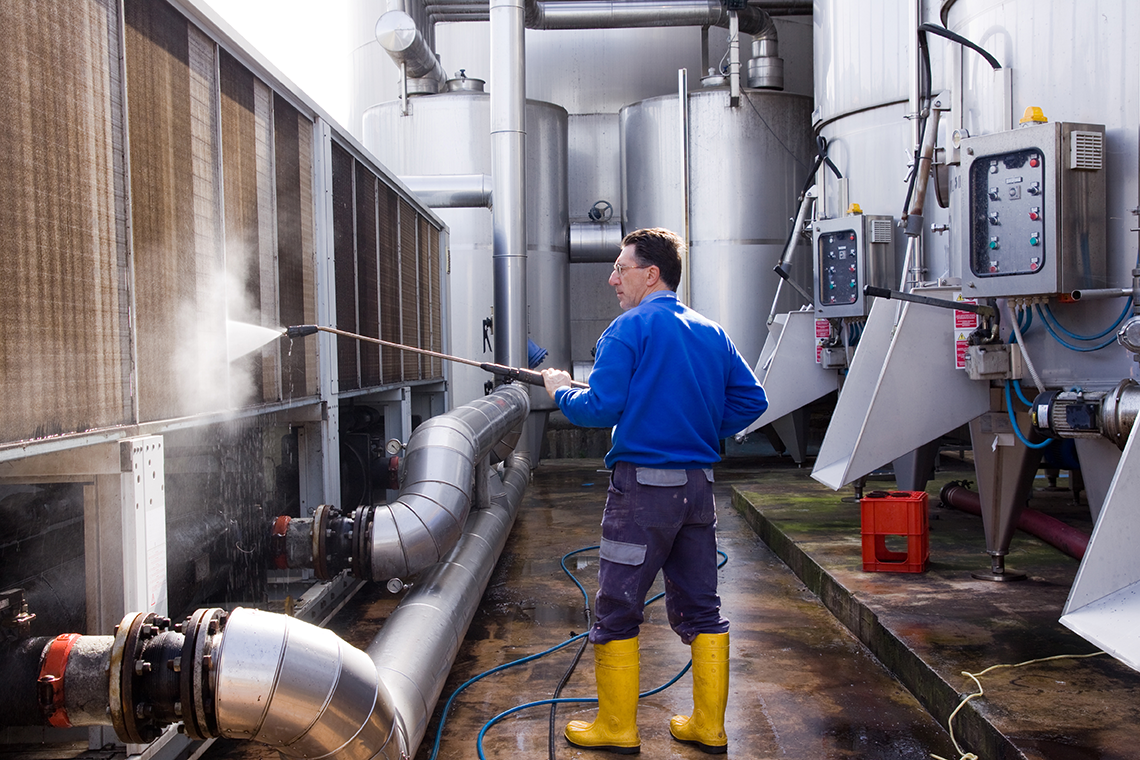


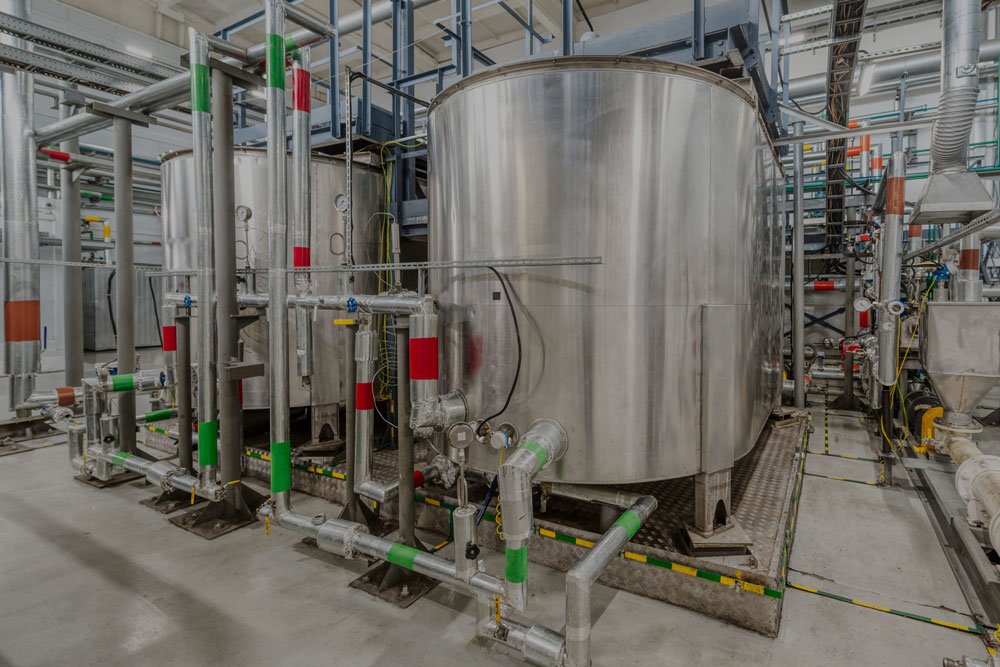

Learn More about ProSonix™ and contact us to discuss your application.
We look forward to working with you!
